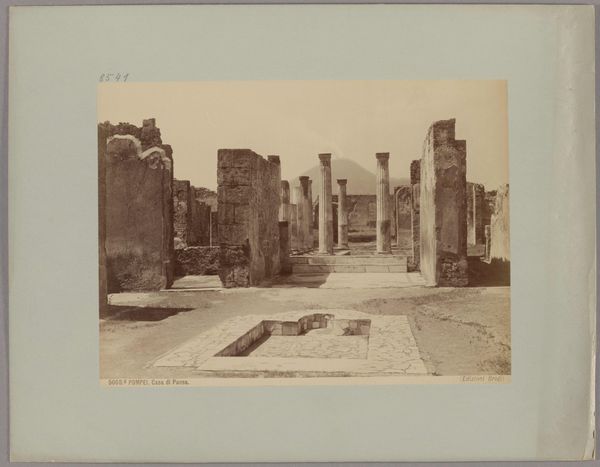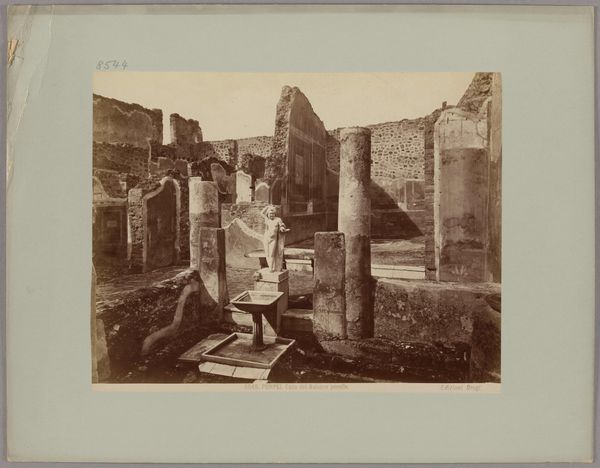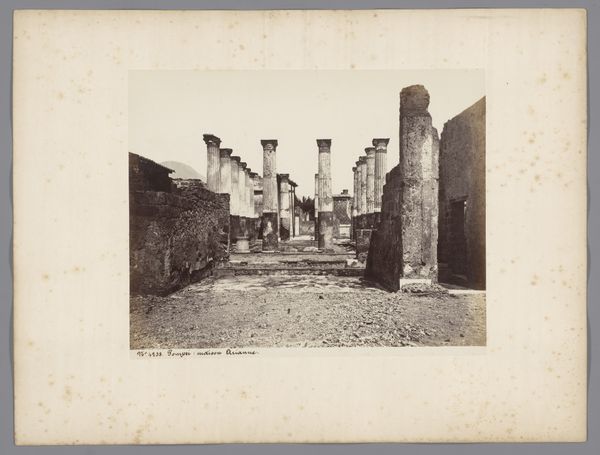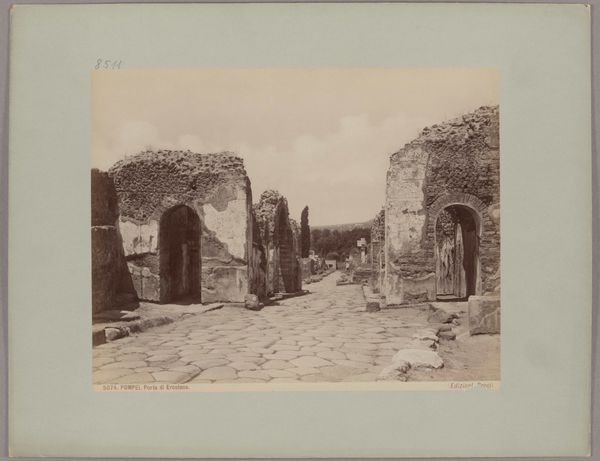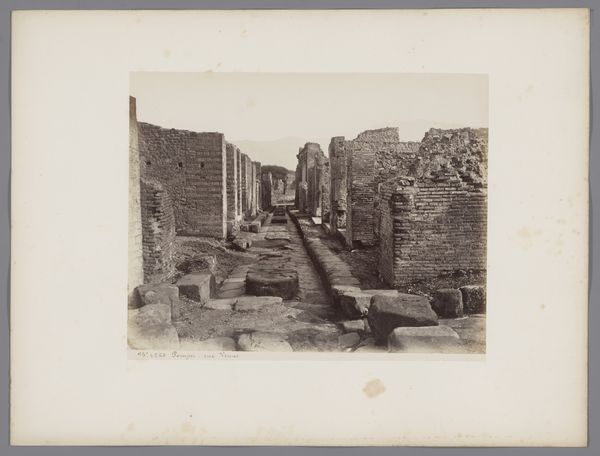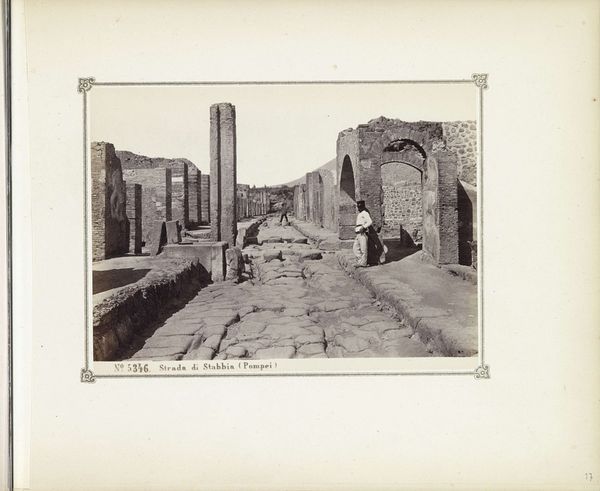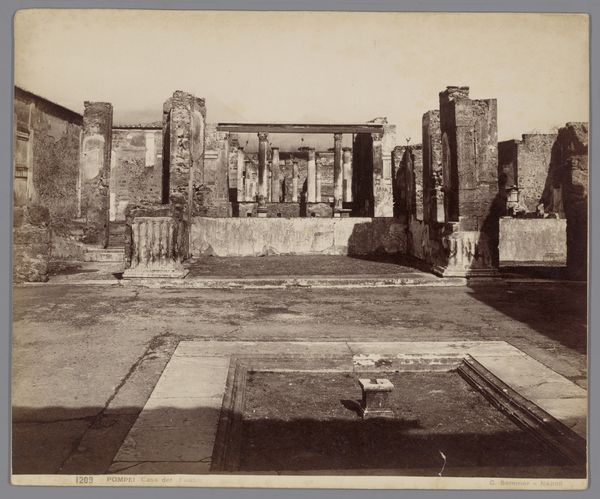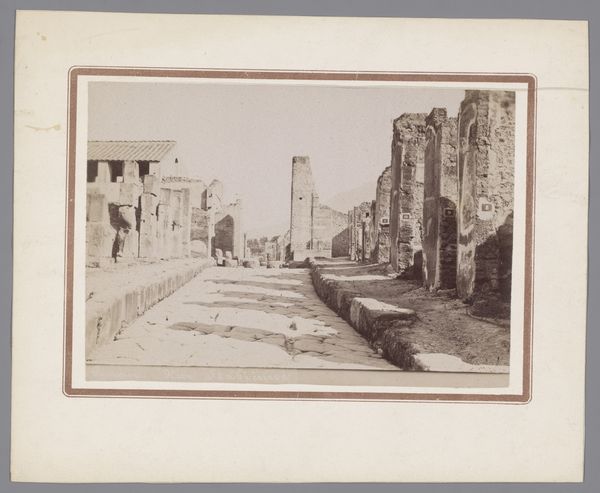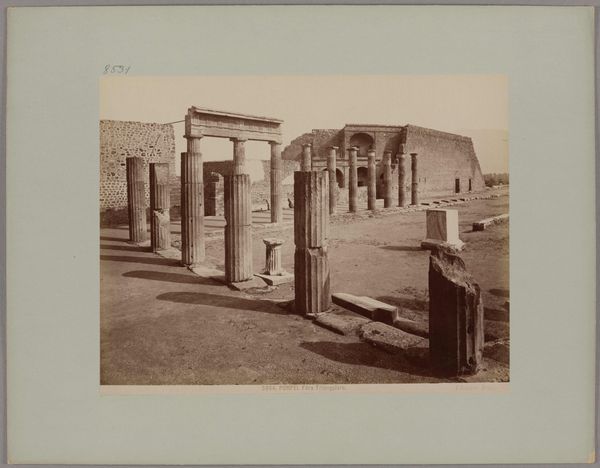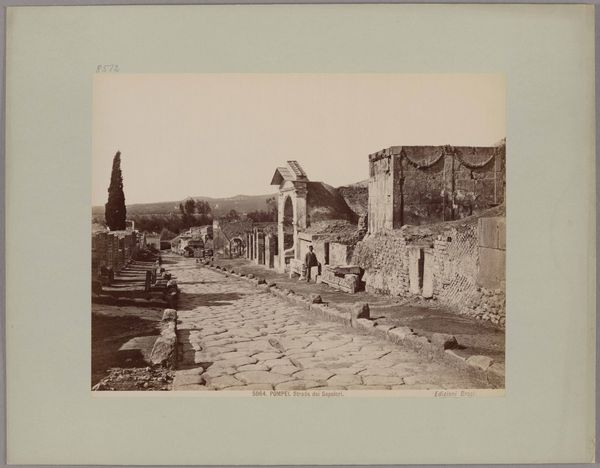
albumen-print, paper, photography, albumen-print, architecture
#
albumen-print
#
16_19th-century
#
landscape
#
paper
#
photography
#
ancient-mediterranean
#
column
#
cityscape
#
albumen-print
#
architecture
#
realism
Copyright: Public Domain
Curator: This albumen print by Giacomo Brogi, taken sometime between 1870 and 1880, captures the House of Cornelius Rufus in Pompeii. What's your first reaction? Editor: A stark silence. The composition is powerfully linear, almost like a stage set, and the sepia tone amplifies the feeling of standing amidst preserved history. Curator: Precisely. Photography played a vital role in shaping the Victorian-era public’s understanding of archaeological discoveries like Pompeii, helping construct narratives of the ancient world and Roman life. Editor: I’m drawn to the exposed materiality of the ruins—the fractured plaster, the eroded stone of the columns. Think about the craft and labor involved, both in constructing this house originally, and in its uncovering and documentation through photography. Curator: Absolutely, Brogi’s work fed into the developing tourism industry and also, importantly, informed Neoclassical art and architecture back in Europe. Images like this circulated widely, influencing aesthetics and perceptions. Editor: These prints required such a precise manipulation of materials, too—light-sensitive chemicals, paper, the very structure of the built environment, carefully recorded by Brogi. Did he manipulate his settings, perhaps pose elements of ruin, for greater romantic impact? Curator: The question of photographic objectivity is always relevant. While seemingly straightforward documentation, there’s undoubtedly a degree of framing and aesthetic decision-making that serves the artist’s interpretation. Its circulation through printed media also needs to be considered, bringing political questions about how empire looks back to antiquity. Editor: It also hits me how the wealthy industrialists that consumed those images—those that brought mass production to life in the cities that had outgrown the idyllic dimensions captured here—would reflect on this life through an explicitly biased view. Brogi captured the remnants of a consumer culture parallel to their own. Curator: Exactly. A fascinating dialogue unfolds between past and present when we analyze images like these, considering both their artistic and their socio-political implications. Editor: Indeed, examining the intersection of labor, ruin, and representation really shifts our perspective on what we’re seeing—and on the act of seeing itself.
Comments
No comments
Be the first to comment and join the conversation on the ultimate creative platform.

